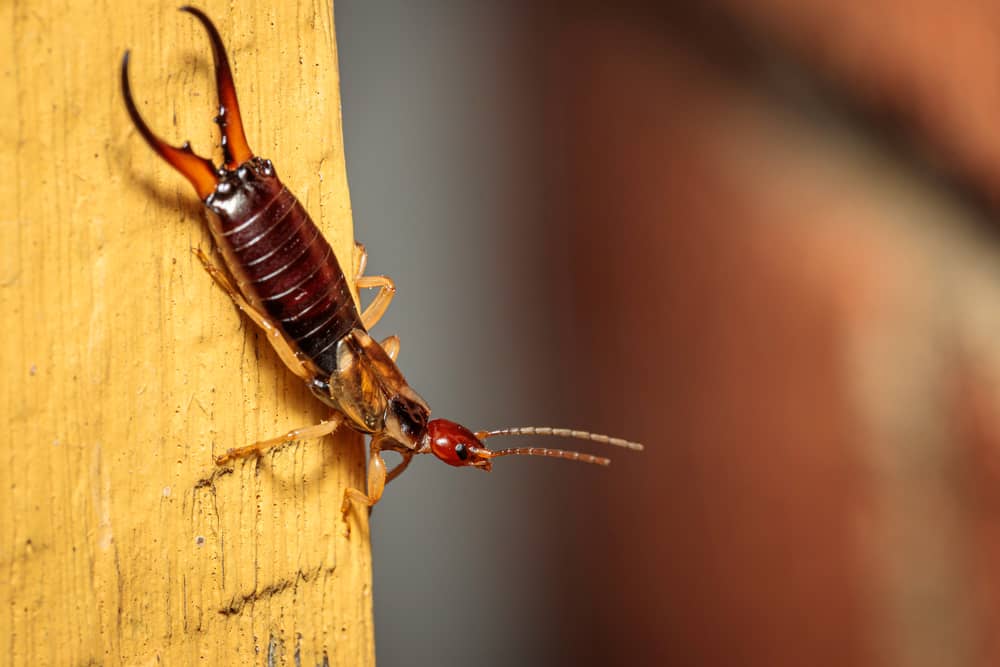Some people, and probably hundreds of insects, refer to Michigan as a Water Winter Wonderland. This northern state has warm, humid summers that make it the perfect destination for several common house bugs.
Some popular house bugs in Michigan include:
- Clover mites
- Centipedes
- Earwigs
- Boxelder bugs
- Carpenter ants
- Stink bugs
- Carpet beetles
- Giant water bugs
- Wood boring beetles
While this list doesn’t touch on the most generic bugs, like mosquitoes, bed bugs, or wasps, it expands on some of those you’ve probably seen but never put a name to. Keep reading to learn more about these bugs commonly found in Michigan houses.
Common House Bugs in Michigan
1. Clover Mites

Starting off strong with Clover Mites (Bryobia praetiosa). As you would expect, these tiny arachnids are a reddish brown (sometimes orange) color. They frequent the most gorgeous Michigan lawns, which somehow makes them even more of a nuisance.
Clover mites prefer to gather around entries to your home. These include windows and doors as well as decks. They’re not fans of colder weather or hunting competition, so they’ll cross the threshold once it seems nicer inside than out.
They’re harmless when compared to other pests, but seeing tiny red dots along your window sills is vexing. Once they make their way inside, your best method of control is vacuuming them up.
Peppermint oil may send them away, but you should seal up any cracks and crevices you notice to limit their entry points.
2. Centipedes
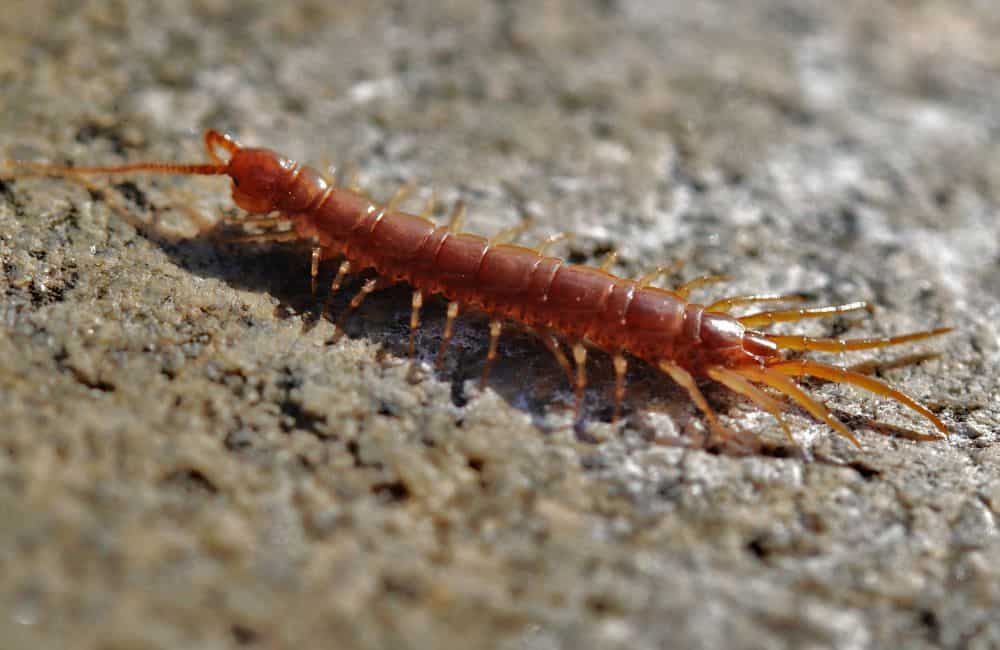
Another fairly-harmless-but-unnerving insect to come across in your Michigan home is a centipede. The House Centipede (Scutigera coleoptrata) is the most likely culprit, and you can identify it by its brown or yellow-gray color and dark stripes down its back.
Unlike the bugs that trespass in colder months, the centipede makes its way indoors during the summer. They will wind a moist, dark area to live in peace. At least until you happen across their many-legged form and respond in a less-than-pleasant way.
Centipedes are nocturnal, preferring to hide in tight spaces until it gets dark. Babies are a sign of a rare infestation, but the bugs pose little threat to you.
If you don’t want them in your home, double down on keeping everything dry. If you see them outside, understand that they play a large role in cutting down on organic matter and are unlikely to wander inside.
3. Earwigs
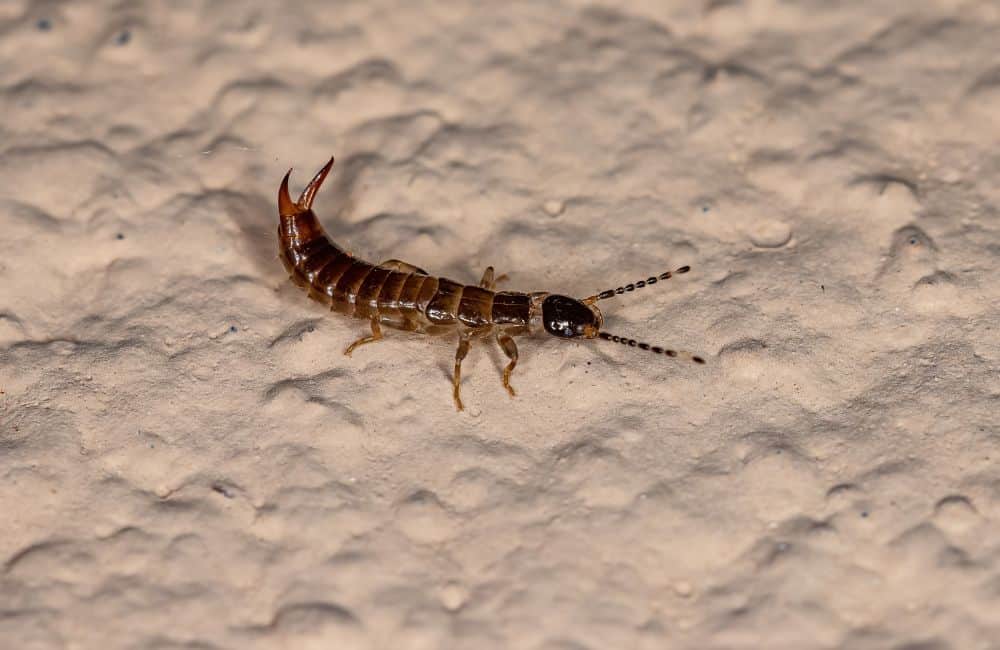
Earwigs (Dermaptera) have been in Michigan since the 1930s. They’re small, flattish insects with a two-tone brown body and large pincers on their tail.
Unlike other house bugs, earwigs do their best to stay outside in moist environments. A rotting log or pile of wood is the perfect playground for their colonies, but the wet soil underneath pots, rocks, and pavers will work just fine.
It isn’t until things dry up or you drag their home (e.g. the pot) inside that earwigs become true house bugs. Even so, they stick to damp areas like basements or bathrooms.
While earwigs can pinch you when threatened, you likely won’t feel more than a pinch. You’ll usually find them in groups that you can easily vacuum up or catch using sticky traps, and there’s little threat of an infestation in your home.
If you’re feeling generous, you can return them to a damp area outside so they can keep breaking down decaying organic matter.
4. Boxelder Bugs
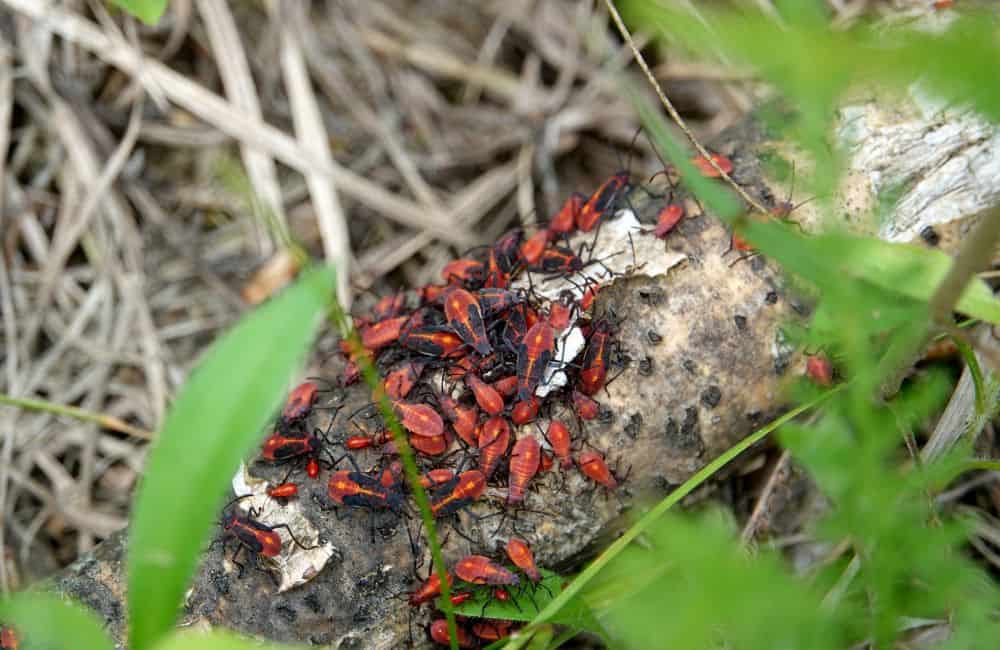
Boxelder Bugs (Boisea trivittata) are pretty easy to identify. They have long, oval-shaped bodies with bright red or orange markings on their black wings. If that’s not enough, the underneath of their wing coverings is a solid red color.
Like most bugs, they prefer to live outdoors. This is where all the plants they munch on are, including the seed pods of their namesake. You usually find them on the warm side of your structures, but this changes once the temperature starts dropping.
Boxelder bugs move inside, slipping through cracks and frames to overwinter. You can spray them with soapy water or vacuum them up if you want to get rid of them, but you don’t need to worry about the bugs biting or infecting you with any diseases.
5. Carpenter Ants
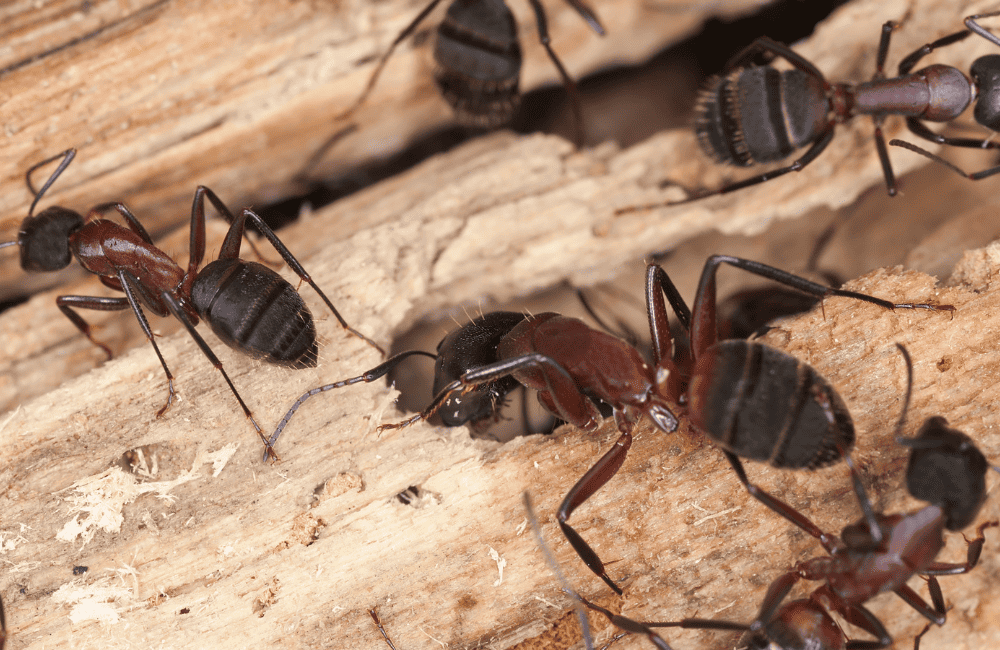
Carpenter ants (Camponotus spp.) are large and well-populated ants in most of Michigan. While they’re commonly confused with termites, there are a few key differences.
In short:
- Carpenter ants nest in the wood, not eat it. They leave piles of sawdust wherever they’re tunneling.
- Their wings are functional and strong enough to stay on their bodies.
- Their galleries are smooth, while termites have rough tunnels.
Because they reach ½ inch in size and have wings, it’s pretty easy to distinguish them from other types of ants. You’re most likely to find them in weak, damp wood, but they’re known to visit your pantry if there’s food that’s easy to access.
To deal with carpenter ants you must clear up any wooden structures they’re nesting in, set out bait traps to deal with the nest, and seal off their point of entry to the nests. Killing the queen ant is essential for eradicating the infestation, and you may need professional help to complete the task.
6. Stink Bugs

Stink bugs like the Brown Marmorated Stink Bug (Halyomorpha halys) are not native to the state, and they’re not doing a great job of making themselves welcome. While they’re relatively small, they produce an immensely unpleasant odor when startled or killed.
Stink bugs can also stain your walls and floor if you crush them, leaving you with a nasty reminder of the pests’ existence. They usually prefer making their homes in fruit trees and certain crops, but even then they overindulge and cause serious damage.
Because they cannot survive freezing temperatures, they will venture inside in colder months. They prefer less-trodden areas like your basement, attic, or crawl space, and can even fit into the slightest cracks to stay hidden.
While they’re more of a nuisance than danger, they are an invasive species and cause serious damage to crops around you. Do NOT crush them. Instead make sure they have no way to use your home to shelter from the cold.
7. Carpet Beetles
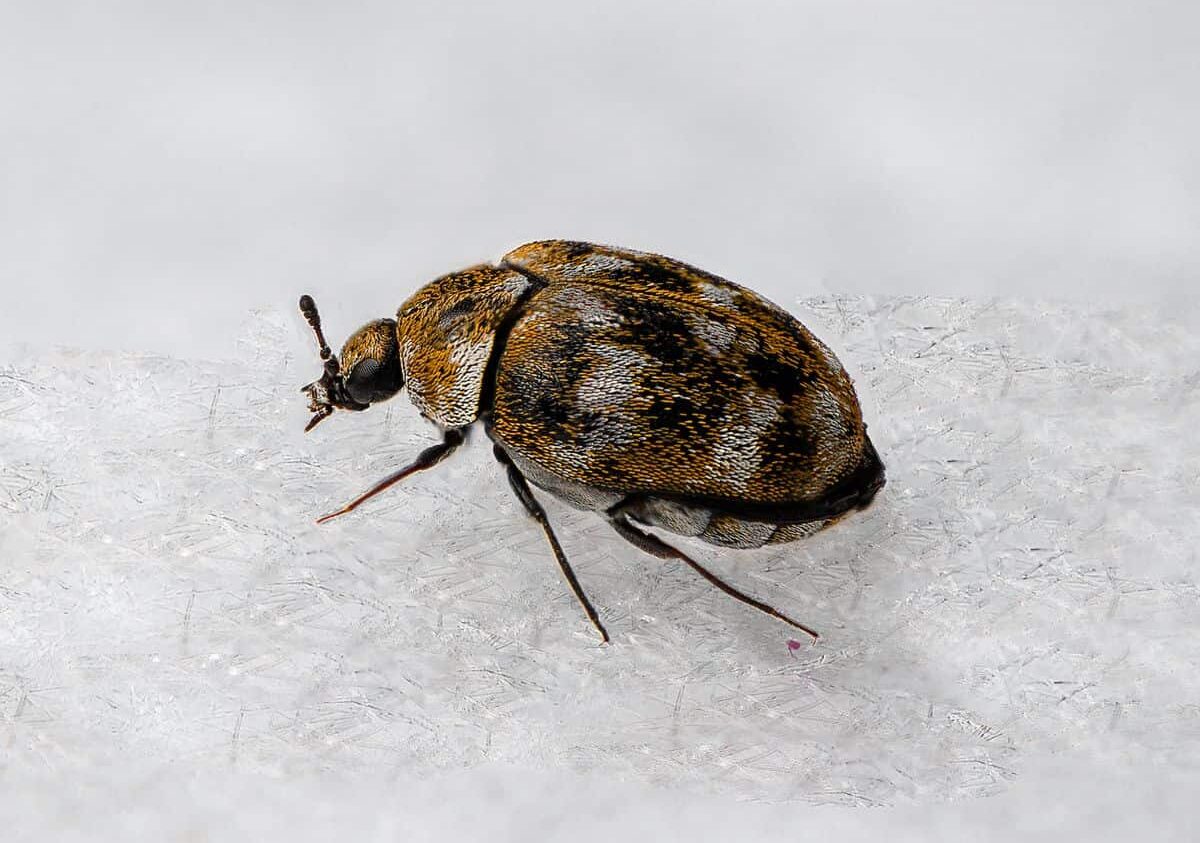
Credit: countryliving
While most beetles are harmless, Carpet Beetles (Anthrenus verbasci) can be a major nuisance. The adults don’t bite and usually stick to their own, but their larvae can devastate your expensive clothing, rugs, and other natural fibers.
Carpet beetle larvae prefer to eat organic material derived from animals. They go after material such as:
- Wool
- Silk
- Fur
- Leather
- Feathers
The beetles don’t play a part in this, but they lay their eggs in areas where the larvae will have plenty to feast on. Outside of your home carcasses work perfectly, but when they venture in for warmth they don’t have as much to work with.
It’s better to focus on prevention of carpet beetles. Make sure your window screens are intact and seal any cracks or crevices along window and door frames. If you notice the brown larvae on your clothes, wash everything in hot water. Make sure you check drawers and anything you have in storage as well.
8. Giant Water Bugs
The Giant Water Bug (Lethocerus americanus) looks like a large cockroach, but it’s in a completely different order. These guys can reach 3 or more inches long and have some characteristics that mark them as predators (rather than scavengers).
These include:
- Clawed front feet
- Short antennas
- A piercing, beaked mouth
The Giant Water Bug is the largest true bug in the state, and it prefers to make its home in shallow marshes. Because they’re attracted to light, it’s not uncommon to draw them into your home by accident.
You want to avoid handling them if you see them. While you’re not their intended prey, they will bite if threatened (especially in the warmer months). Apart from living in the dark, there isn’t much you can do to send them away.
If you live near water or have a pool, keep an eye out and consider wearing covered shoes at night. Keeping a bug zapper somewhere in your yard is helpful in drawing them in the opposite direction of wherever you are.
9. Wood Boring Beetles
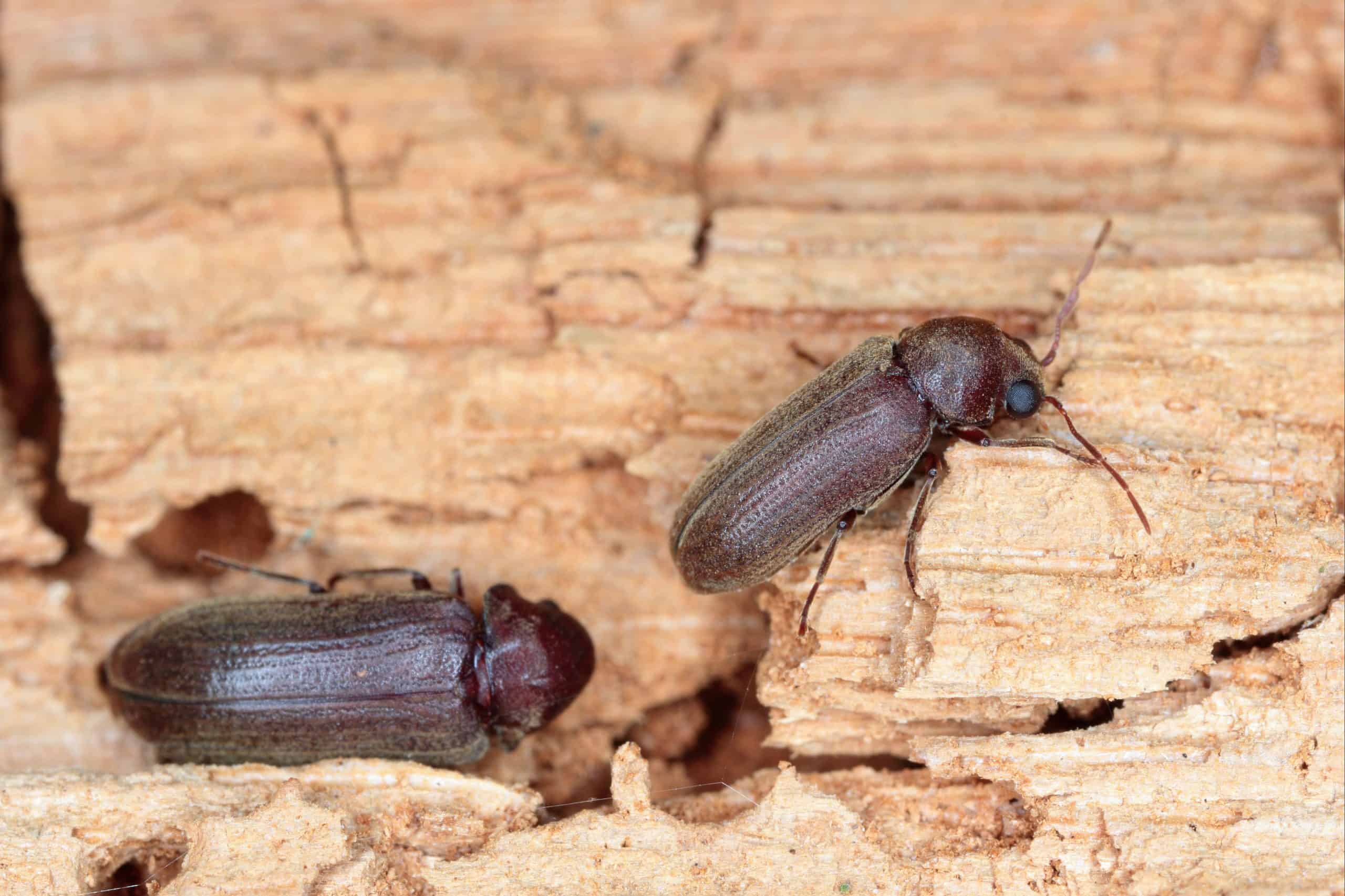
Credit: garrattsdamp
The Powderpost Beetles (Lyctinae) are the most common example of wood boring beetles in Michigan. They lay eggs inside compromised wood early in spring. When the eggs hatch they will tunnel their way out, eating the wood hollow as they go.
These beetles can lay eggs in integral parts of your home, such as your roof, and cause catastrophic damage if they’re not handled quickly. In fact, the larvae can keep boring for 7 years before they turn into the less-destructive adults.
The earliest sign of wood boring beetles is the pile of sawdust they leave when they tunnel out. Otherwise, you should suspect any small brown beetles roaming your wood structures.
Pest controllers usually respond to these infestations with fumigation.
Conclusion
Hopefully this guide expands your knowledge of common pests beyond bees and fleas. As you can see, many of these household pests are little more than a nuisance, and you should be able to handle them on your own.
If they keep showing up or you notice a large population, make sure you’ve sealed up any cracks or torn screens. You may need to reach out to a professional pest controller to deal with some of these common bugs in more effective ways.
Are you unsure what type of bug you’re dealing with? Let us know what you’ve noticed, and we’ll help you pinpoint the pest.
